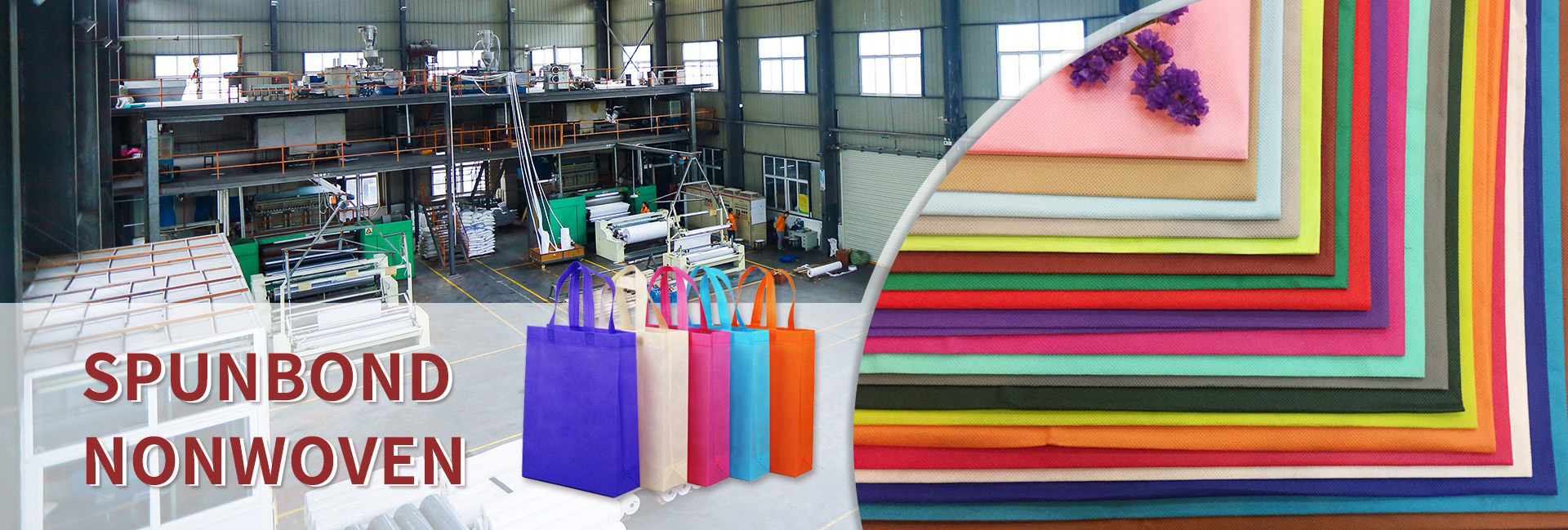PP nonwoven fabric and SMS nonwoven fabric are two different types of nonwoven materials with some differences in structure and application.
PP non-woven fabric
PP non-woven fabric is made of polypropylene material and is usually manufactured using melt spinning technology. This material has the characteristics of lightness, toughness, and wear resistance, as well as good breathability and waterproof performance. Therefore, it has a wide range of applications in healthcare, home goods, packaging, and other fields.
SMS non-woven fabric
SMS non-woven fabric is composed of a three-layer structure, where “S” represents Spunbond, which is the layer manufactured by the spinning process, “M” represents Meltblown, which is the layer manufactured by the melt blowing process, and the last layer still represents Spunbond. This makes SMS non-woven fabric not only have the characteristics of gentle and comfortable spinning non-woven fabric and high tensile strength, but also add the characteristics of melt blown non-woven fabric such as good liquid filtration and water absorption performance. Therefore, it is widely used in protective products such as surgical gowns and masks in the field of healthcare.
The main difference between SMS non-woven fabric and PP non-woven fabric
Material and Structure
PP non-woven fabric
Single material structure, usually made of single-layer polypropylene fibers through spunbond or meltblown methods. Common types include S (spunbond method), M (melt blown method), or a simple composite of both (such as S+S or S+M). Spunbond fibers are thicker and have higher strength; The melt blown method has extremely fine fibers (micrometer level), good filtration performance but low strength.
SMS non-woven fabric
A three-layer composite structure consisting of two spunbond layers sandwiching a meltblown layer (S-M-S). Combining the strength of spunbond with the filtering properties of meltblown, it combines protection, flexibility, and breathability.
Production process
PP non-woven fabric, mainly using spunbond method: molten PP is extruded into continuous filaments through a spinneret, and then stretched, laid, and hot-rolled for reinforcement. If it is melt blown PP non-woven fabric, the PP melt is blown into ultrafine fibers by high-speed hot air. )
SMS non-woven fabric requires a combination of spunbond (S) and meltblown (M) processes, and is continuously produced through multi-layer online composite technology, making the process more complex.
Performance characteristics
SMS non-woven fabric has high strength (supported by the spunbond layer), excellent filtration performance (intercepted by the meltblown layer), excellent waterproofing (multi-layer composite can prevent liquid leakage), softer softness (increased delicacy by the meltblown layer), good breathability (balanced protection and breathability), and high resistance to static water pressure (suitable for medical protection).
Characteristics: PP non-woven fabric (spunbond method) has high strength (filament structure), poor filtration (coarse fibers, large pores), average waterproof performance, relatively hard softness (coarse fibers), good breathability, and low resistance to static water pressure.
Application Fields
PP non-woven fabric (spunbond method)
Shopping bags, agricultural covering materials, household items (tablecloths, bed sheets), packaging materials, etc., focus on durability and low cost.
SMS non-woven fabric
Medical protection (surgical gowns, isolation gowns, masks), hygiene products (high-end diaper surface), industrial filtration (air/liquid filtration materials), emphasizing protection, comfort, and functionality.
Cost
The production process of PP non-woven fabric is simple, with a single raw material and low cost. SMS non-woven fabric requires multi-layer composite technology, and the cost of the melt blown layer (especially for high filtration levels) is relatively high, resulting in a higher overall price.
Conclusion
SMS non-woven fabric is an upgraded version of PP non-woven fabric, which integrates different performance layers through multi-layer composite technology, suitable for high demand protective scenarios.
Ordinary PP non-woven fabric (such as spunbond method) focuses more on economy and basic performance, and is widely used in daily fields.Both are made of polypropylene material, but differences in structural design and manufacturing processes result in significant differences in performance and usage.
Dongguan Liansheng Non woven Technology Co., Ltd. was established in May 2020. It is a large-scale non-woven fabric production enterprise integrating research and development, production, and sales. It can produce various colors of PP spunbond non-woven fabrics with a width of less than 3.2 meters from 9 grams to 300 grams.
Post time: May-19-2025

